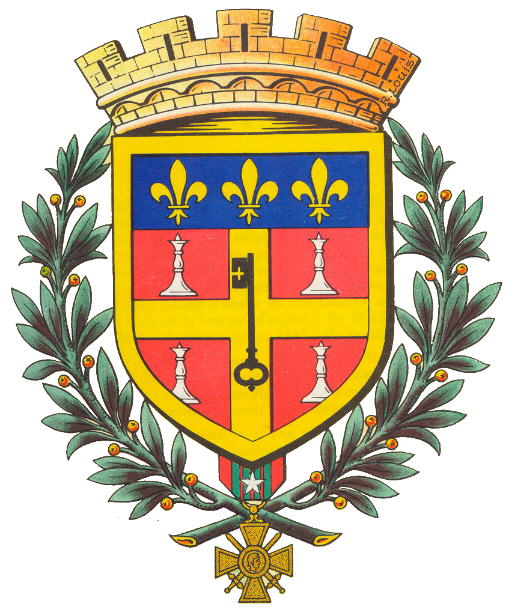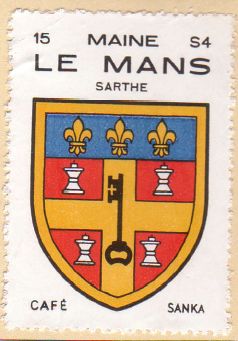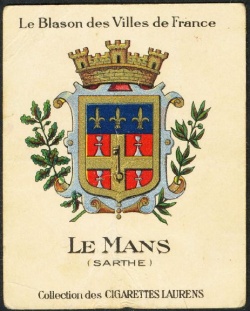Le Mans: Difference between revisions
Jump to navigation
Jump to search
Knorrepoes (talk | contribs) m (Text replace - "{|width="100%" style="color:black; background-color:#ffffcc;" |width="15%"|50 px|left |width="70%" align="center" |'''Heraldry of the World<br/>Civic heraldry of France - Armorial de France''' |width="15%"|[[Fil) |
Knorrepoes (talk | contribs) m (Text replace - "'''Origin/meaning :'''<br/> The" to "====Origin/meaning==== The") |
||
| Line 10: | Line 10: | ||
[[File:mans.jpg|center]] | [[File:mans.jpg|center]] | ||
====Origin/meaning==== | |||
The chandeliers refer to a legend about a miracle that occurred at the funerals of Saint Julian, first bishop of Le Mans (in the 3rd century AD), in which three ever-burning candles were involved. The oldest arms of Le Mans showed only the candles. | The chandeliers refer to a legend about a miracle that occurred at the funerals of Saint Julian, first bishop of Le Mans (in the 3rd century AD), in which three ever-burning candles were involved. The oldest arms of Le Mans showed only the candles. | ||
Revision as of 07:03, 21 November 2012
| Heraldry of the World Civic heraldry of France - Armorial de France |
LE MANS
Département : Sarthe
Origin/meaning
The chandeliers refer to a legend about a miracle that occurred at the funerals of Saint Julian, first bishop of Le Mans (in the 3rd century AD), in which three ever-burning candles were involved. The oldest arms of Le Mans showed only the candles.
Le Mans became a free city in the 11th century which is represented by the key. The chief of France indicates that the Le Mans was a Royal city, with the honour of having its mayor represented at the coronation ceremony of the French Kings.
| The arms in the Café Sanka album +/- 1932 |
The arms on a tobacco card by Laurens |
Literature : Cordonnier et al, 1962



